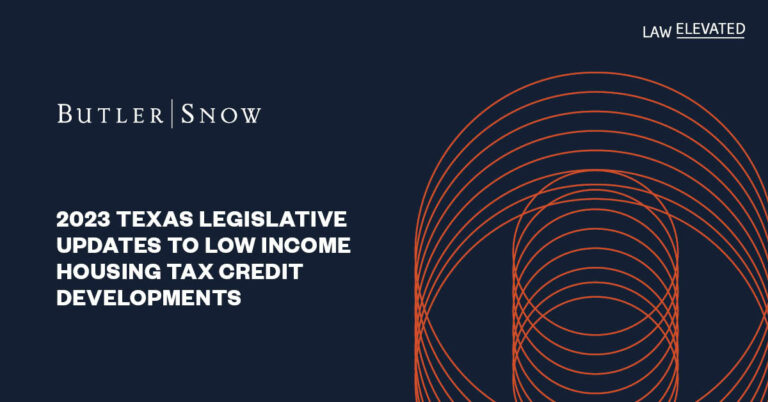During the 88th Regular Session, the Texas Legislature passed H.B. 1058 creating a state low-income housing tax credit program. The program will be administered by the Texas Department of Housing & Community Affairs (TDHCA) and allows the department to issue state tax credits that can be used to offset franchise tax and insurance premium tax for companies with an ownership in certain affordable housing developments.
Federal Low Income Housing Tax Credit Program
The federal Low-Income Housing Tax Credit (LIHTC) was created by the Tax Reform Act of 1986 to incentivize the acquisition, new construction, and rehabilitation of affordable multifamily rental housing for low and moderate-income tenants. The LIHTC program designates state agencies to issue tax credits for qualifying projects, which in turn attract substantial equity investment from private investors. Eligibility requirements stipulate that developers must agree to reserve all or a portion of the project’s rental units for low-income tenants for at least 30 years. Tax credit investors commit to fund capital for the project in exchange for Federal LIHTCs. To supplement the Federal LIHTC Program and the development of affordable housing, many states have enacted their own state low-income housing tax programs.
Texas State Low Income Housing Tax Credit Overview
H.B. 1058 was enacted to bolster the Federal LIHTC Program and support the development of affordable housing across the state. H.B. 1058 amends the Texas Tax Code and the Texas Insurance Code to establish a franchise tax credit and an insurance premium tax credit for multifamily developments approved by the Texas Department of Housing & Community Affairs (TDHCA).
Some of the new provisions under H.B. 1058 require:
- TDHCA to implement and monitor the new program.
- Developers to layer federal and state credits to underwrite development costs.
- TDHCA to allocate a total value of $25,000,000 in credits each year to be equally split between the 4% LIHTC tax exempt bond developments and the 9% LIHTC developments.
- TDHCA to set aside $5 million of the annual state housing credit ceiling in the first year to be granted to projects awarded in 2021 and 2022.
- Developers to apply for Texas state LIHTCs as part of their federal LIHTC application submitted to TDHCA. Eligible developments must comply with the federal LIHTC Program, the Texas Qualified Allocation Plan (QAP), and the Fair Housing Act to receive state LIHTCs.
- State LIHTCs bifurcation from Federal LIHTCs. The owners of a qualified development intending to claim Texas LIHTCs have the flexibility to determine how to allocate the credits. This feature of the Texas LIHTC Program adds valuable flexibility for transaction structuring.
- TDHCA to issue allocation certificates for state LIHTCs in an open cycle beginning in 2024 and must be claimed over a 10-year period.
Conclusion
Broad economic principles like higher interest rates and inflated construction costs pose significant challenges to affordable housing development. With almost half of Texans spending more than 30% of their household income on housing costs, the need for affordable housing development in Texas is more important now than ever. The creation of a Texas low-income housing tax credit program seeks to address this need.
The Texas Regulatory & Government Practice Group provides consulting, advisory and advocacy services related to real estate development and the use of economic development incentives for affordable housing providers. Our team has experience representing national developers, syndicators, REITs and development management companies. We are here to help. Please reach out with questions related to HB 1058, LIHTCs or other tax incentives.
